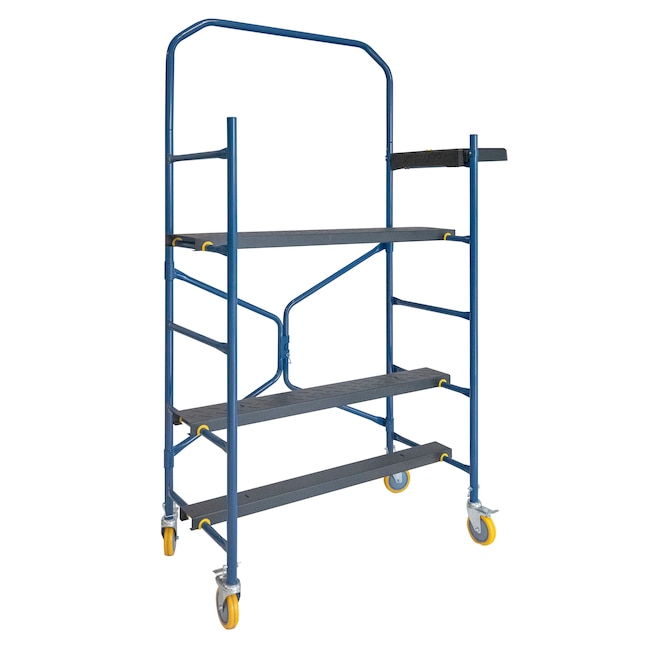Find Reliable Scaffolding Services in Surrey for Your Project Needs
Find Reliable Scaffolding Services in Surrey for Your Project Needs
Blog Article
Exploring the Various Kinds Of Scaffolding Used in Building And Construction Jobs
The building sector depends greatly on various types of scaffolding to satisfy particular task demands, each offering unique benefits and applications. Standard frame scaffolding offers a strong structure for general tasks, while suspended scaffolding is crucial for job on high-rise structures.

Conventional Structure Scaffolding
Traditional frame scaffolding is among the most extensively used approaches in the building and construction sector due to its robustness and versatility. This system includes vertical and straight frames that are set up to produce a steady system for materials and workers. The primary components include vertical messages, straight journals, and angled dental braces, which together supply a strong structure that can support substantial loads.
Among the vital advantages of conventional framework scaffolding is its adaptability to different construction jobs, varying from residential structures to large commercial frameworks. The modular style enables for easy assembly and disassembly, making it effective for both long-term and temporary tasks. Furthermore, the system can be personalized in elevation and width, fitting various structure designs and website problems.
Security is paramount in scaffolding applications, and conventional frame systems are equipped with guardrails and toe boards to prevent falls and ensure employee defense. Normal inspections and adherence to safety guidelines are critical in maintaining the stability of the scaffold (Scaffolding). In general, typical framework scaffolding remains a basic selection in the construction sector, giving a reliable system for labor and boosting general project effectiveness

Suspended Scaffolding
Put on hold scaffolding uses a special option for construction projects that require access to raised surface areas, especially in situations where traditional frame scaffolding may be impractical. This kind of scaffolding is typically suspended from the roof covering or upper levels of a structure, making use of a system of pulleys, ropes, and systems to create a working room that can be gotten used to numerous elevations.
One of the primary advantages of put on hold scaffolding is its versatility. It can be quickly repositioned or reduced to suit modifications in building demands, making it suitable for tasks such as home window installment, façade job, and upkeep on skyscraper structures. Additionally, the marginal impact of suspended scaffolding enables better use ground space in city environments, where room is typically restricted.
Safety is a crucial consideration in the usage of put on hold scaffolding. Generally, put on hold scaffolding provides a effective and efficient service for accessing hard-to-reach areas in different construction situations, enhancing both performance and security on site.
System Scaffolding
System scaffolding, typically considered a contemporary remedy in the scaffolding industry, includes pre-engineered elements that can be promptly set up and adjusted for different building jobs. Scaffolding. This sort of scaffolding is characterized by its modular design, which permits convenience and effectiveness on job websites, fitting different elevations and architectural requirements
Generally made from high-strength steel or aluminum, system scaffolding offers enhanced longevity and security. The components include upright articles, horizontal ledgers, and diagonal dental braces, which adjoin securely, ensuring a robust framework. The style often incorporates standard fittings, streamlining setting up and disassembly processes, thus reducing labor time and expenses.

Rolling Scaffolding
Rolling scaffolding is a flexible alternative to standard fixed scaffolding, developed for movement and ease of use on building sites. This kind of scaffolding includes a platform supported by structures with wheels, allowing employees to quickly transfer it as needed. The flexibility feature dramatically boosts productivity, as it decreases downtime related to disassembling and setting up repaired scaffolding.
Usually constructed from lightweight products such as light weight aluminum or steel, rolling scaffolding offers a strong yet portable solution for jobs calling for constant repositioning - Scaffolding. It is particularly advantageous in jobs such as paint, drywall installation, and electrical work, where access to different elevations and places is required
Security is critical in rolling scaffolding design, with features such as securing wheels to stop unplanned movement when in operation, and guardrails to protect workers from falls. In addition, several models are flexible in elevation, fitting numerous task needs.
Cantilever Scaffolding

The layout of cantilever scaffolding generally entails using arms or braces secured to a building or framework, enabling the system to extend external safely. Security is vital; thus, these scaffolds must be crafted to endure ecological problems and various lots. Regular inspection and maintenance are vital to ensure structural integrity and worker safety and security.
Cantilever scaffolding is preferred for its flexibility and reliable use space, making it a prominent option in city settings where area constraints are common. In addition, it assists in less complicated accessibility to high altitudes, ultimately adding to the total performance of building and construction projects. Similar to all scaffolding kinds, proper training and adherence to security standards are essential for employees making use of cantilever scaffolding.
Verdict
Traditional framework scaffolding provides security, while suspended scaffolding offers versatility for elevated tasks. System scaffolding promotes fast assembly, and rolling scaffolding improves movement for varying work settings.
Traditional structure scaffolding provides a durable foundation for general jobs, while suspended scaffolding is important for work on skyscraper structures.Rolling scaffolding is a versatile choice to standard set scaffolding, designed for wheelchair and simplicity of usage on building and construction websites. As with all scaffolding kinds, appropriate training and adherence to security requirements are vital for employees utilizing cantilever scaffolding.
Conventional structure scaffolding supplies security, while put on hold scaffolding uses convenience for raised tasks. System scaffolding assists in fast assembly, and rolling scaffolding enhances flexibility for my site differing work settings.
Report this page